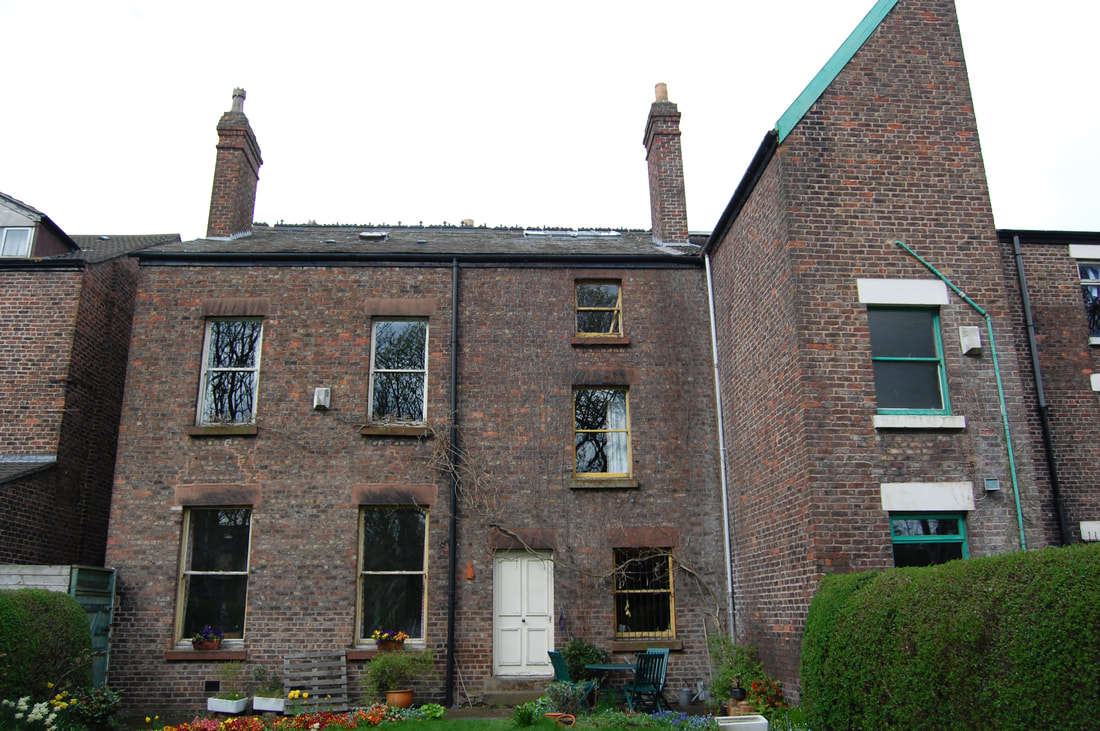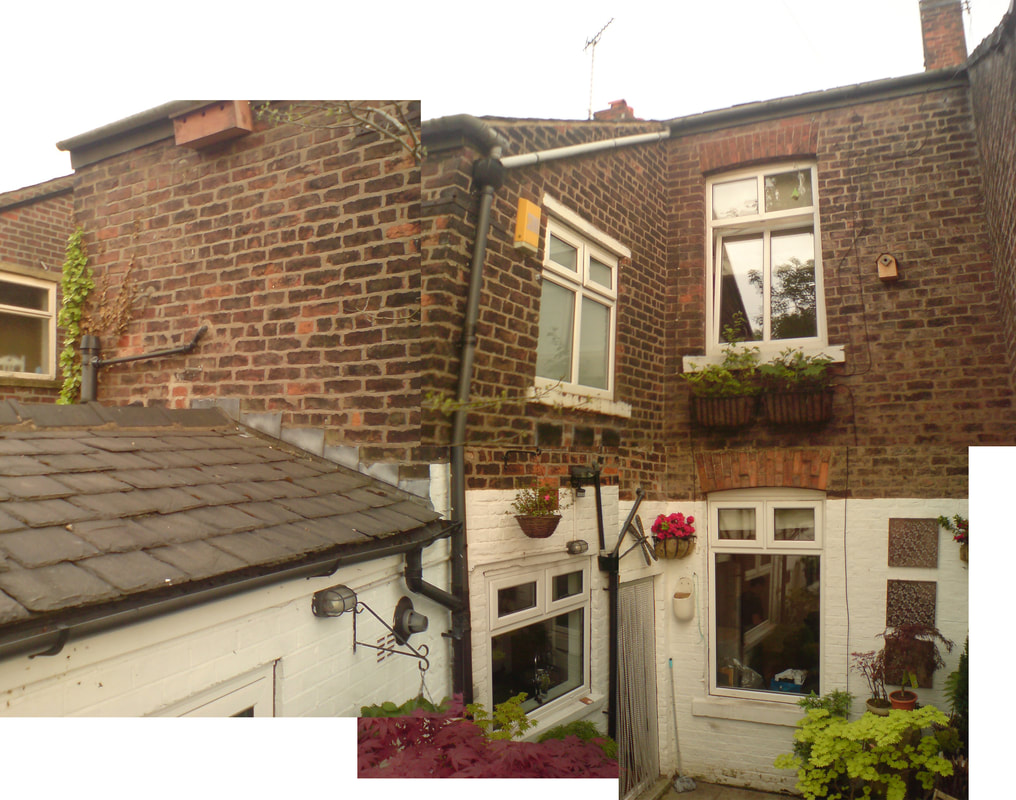|
Imagine arriving home to your stylish and characterful home that oozes Victorian period charm. Your roof a crowning example of good taste and fine design that will last long into the future. Imagine your dry and warm home, beautiful and comfortable, inside and out. The problem is you have no idea how to get there. You don't even know what decisions you need to make. Or, you have an idea, but it's so overwhelming that you don't know what to choose. This much you do know. You know you need to replace your roof. Slates have slipped, the battens have snapped, there's no roofing felt left if there ever was any, and it's leaking in several places. You know you need some more insulation. It's freezing in winter and too hot in summer. You call some roofers out to take a look, and to give you a price for re-roofing. You tell them you need a price for a new roof, leaving the details up to them. You get a standard looking roof. Thick concrete slate-look tiles, modern featureless ridge, black half-round UPVC gutters, UPVC fascia and soffit, just like every other bland mediocre roof on the street. Unlike the original roof that lasted somewhere around 100 years or more, this roof could last only 25 years. Imagine you have your roofer working away already. The scaffolding is going up. Your roofer is asking you for some decisions and needs an immediate answer. They want to get on with the work and you want your new roof completed before the next rainfall. You've got an hour to decide, tops, because they need to get the materials from the builders merchants this afternoon so they can make a start tomorrow. Then imagine lying awake at night worrying if those were the right decisions and not ones that you'll live to regret. It doesn't need to be this way. You can make the decisions before you get a roofer in. You can take your time to think about how you want your ideal roof to be, not rushed into snap decisions. Imagine taking your time to think about it over the weekend. Chatting about it with your other half over a cup of coffee or a glass of wine. Filling a Pinterest board with beautiful photos of your favourite options. You write a list of the things you want, and get your roofer to price for everything you'd ideally like. You get your contract in place, and then sit back while your roofer delivers what you want. Minimum stress. Maximum chance of your best roof outcome. If this sounds good to you, lets get started making decisions for your Victorian roof with this ultimate guide to Victorian Roofs in the North West. Style StandardsVictorian roofs come in many different forms. Around Manchester and Liverpool and throughout most of the North-West of England, most Victorian homes are in the Gothic style, or for older homes the Regency style. This means that, generally in the North West, parapet roofs are not so common and it's more likely that you'll have an overhanging eaves. Gothic styles tend to have a usable or inhabited loft space with steep roof pitch, pitched dormers, tall decorative chimneys, and fancy detailing for every element. Older Victorian homes in the Regency style tend to have bigger overhanging eaves, with simpler detailing overall, a lower pitch and less usable loft space. Consider the overall style of your home when deciding the details. If it's a simpler regency style, don't choose overly complicated details. If it's a gothic style then let yourself get fancy and choose more decorative details. Chimney Considerations Take the opportunity to repair and refurbish these while the scaffolding is up so you don't need to deal with these again for a good few years. You don't want your beautiful new roof damaged by other trades dealing with your chimney in a few years time. The buddleia and other plants that have made their home on your chimney need to be dug out. Think about repointing the brickwork, replacing the flaunching, and replacing broken or missing Chimney pots. Decide how to deal with your chimney pots and the flue depending on how you choose to use the fireplace inside: open fire if it's not a smokeless zone, wood burning stove, gas fire, decorative only with no fire, or chimney breast removed inside or blocked up. Ridge Rules The highest point on the roof is the ridge and is often the most visible. Gothic ridges can be super decorative with added cresting and you can still get elaborate ornate ridge tiles with cresting to use. Check if your home has an original ornate ridge, or if old photos of your home show that it did, or if other houses similar to yours in the street still have their original ridge. You can get similar cresting or even the original copied to replicate this detail and add a really special quality to crown your roof. If your home is more regency style or you prefer a modern look then a simpler ridge is a good option. If you like you can add some distinctiveness by having a contrasting colour or use a similar colour to the main roof if you prefer a simple unified look. Slating Spec If you're in a conservation area or your home is a listed building then you are likely to be restricted in the materials you can use. Most Victorian roofs in the North-West are slate from North Wales, but stone can be found, along with clay tiles. There are many types of slate available. Slate comes in different colours and strengths, which depends on where it comes from. If there are no planning restrictions then you can look at alternatives to slate that give a similar look. Manmade slate-look materials will be cheaper, but most will not have the same longevity/durability as natural slate and rarely look as good. Consider colour, texture, size and laying pattern. If you want to add more decorative detail you can use a combination of different slate colours or even add in different shapes. Gutter Guidelines The gutter is usually highly visible and choosing a suitable profile, considering the material and colour can make a huge difference. Most people choose black o white UPVC for the gutter but not only do they look terrible on a period home, they will also need replacing sooner than more traditional materials. Victorian gutters were usually cast iron and half round or ogee profile. Cast iron needs more maintenance and once it has rusted will need to be replaced but it can still last for many decades and longer than plastic with the right maintenance. Aluminium gutters can be made in heritage profiles and come ready finished with a paint coating. You can even get specially finished versions that have the same texture as cast iron. Aluminium is relatively low maintenance and long lasting. Copper is also an option and although it the most expensive choice it is likely to last the longest and has a very unique look as it weathers naturally to a green finish, needing little to no maintenance. Soffit Standards The gable and the eaves are where the roof meets the wall. Some have a parapet, some have an overhang, some have highly decorative gothic bargeboards, others have classical brick details, some have decorative brackets, and others have a flush fascia. In short Victorian roofs, and how they finish at the wall, can be very different. Take a good look at yours. Chances are you haven't really noticed it much, soffits and such details are often overlooked. These simple details are an opportunity to add quality and distinctiveness to your home. Modern roofs now often use verge tiles to finish a gable in a simple way. These were not commonly used by Victorians, especially not on a slate roof. Modern soffits and eaves are often covered by plastic strips that only have low maintenance in their favour. Consider your options and think about the shapes, materials, colours and textures that you could introduce here to give your home that refined Regency look or the decorative Gothic look, whichever suits your home and your tastes. Energy Exemplar The roof typically represents about 25% of the heat loss in your home. Improving the way the roof performs can make your home both much more energy efficient as well as considerably more comfortable. Simple and sophisticated changes can have a huge impact and if you are replacing your roof anyway will not cost a significant amount more to add in than doing it the standard meeting building regulations way. All works that involve a change to the “thermal envelope”, such as the roof, do require building regulations approval so make sure you factor this in. You can simply add more insulation. You can go further and improve airtightness, for example by changing a vented roof to an unvented roof. When carrying out energy improvements works it is important to get it right so that you don't add problems like condensation and rot risks in where they didn't previously exist. Check with product manufacturers or get specialist help to design your new build up. It is really worth considering making these changes because, although this is the bit that you don't see, you will really feel the difference both to your comfort and your heating bills, especially in the depths of winter. Making the right decisions will help you to take your roof refurb from standard to stand-out.There are lots of things to take into account but don't become overwhelmed. If you need help speak to a specialist eco-refurbisher. Look at The Green Register where you can find us and other fellow professionals. If your roof is leaking and its time for a refurb, you can increase the value of your home by making this key visible element a bigger and better asset that adds to the character of your home and makes your life more comfortable.
Instead of losing character and keeping the same existing and typically poor quality of energy performance you can enhance the original features of your Victorian home and make it easier to heat and feel more comfortable at home, both during the winter and the summer. To help you make the right choices for your Victorian Roof, book a consultation call with me to discuss your options and get answers to your questions. >> Book a Consultation Call Here << Comments are closed.
|
Design Your Home VisionThe Design Your Home Vision Checklist will help you kickstart your home improvements.
Download yours with the button below to get your home project off to a great start: Get started with the free Design Your Home Vision checklist. AuthorJane Leach, principal architect at i-architect Categories
All
Archives
July 2024
|
Jane Leach is an RIBA-accredited Conservation Registrant and a Green Register listed Eco-Refurbisher
all content copyright to Jane Leach chartered architect and iarchitect Limited 2009 - 2024






 RSS Feed
RSS Feed



